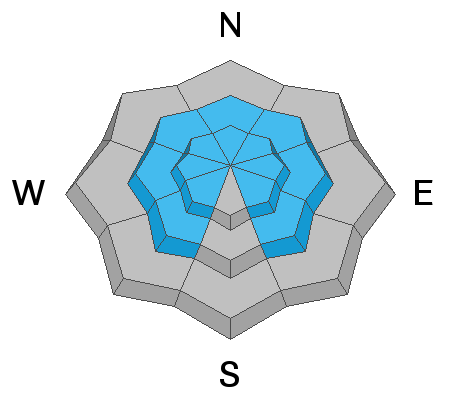Forecast for the Salt Lake Area Mountains

Issued by Trent Meisenheimer on
Wednesday morning, December 23, 2020
Wednesday morning, December 23, 2020
HIGH avalanche danger exists on steep slopes facing northwest through southeast above about 9,500' for triggering a slab avalanche 1-3' deep, and traveling in avalanche terrain is NOT recommended.
There is a CONSIDERABLE avalanche danger on steep slopes between 8,000'-9,500' that face northwest through southeast; and on steep slopes facing south, southwest, and west at upper elevations, for triggering slab avalanches 1-3' deep. Careful snowpack evaluation, cautious route-finding, and conservative decision-making will be essential. Avalanches can be triggered from a distance.
Below 8,000', there is a LOW avalanche danger simply because there isn't enough snow.
There is a CONSIDERABLE avalanche danger on steep slopes between 8,000'-9,500' that face northwest through southeast; and on steep slopes facing south, southwest, and west at upper elevations, for triggering slab avalanches 1-3' deep. Careful snowpack evaluation, cautious route-finding, and conservative decision-making will be essential. Avalanches can be triggered from a distance.
Below 8,000', there is a LOW avalanche danger simply because there isn't enough snow.

Low
Moderate
Considerable
High
Extreme
Learn how to read the forecast here





